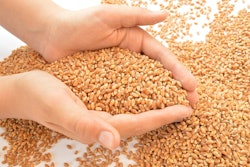The January update from the annual BIOMIN® PROcheck Mycotoxin Report survey in corn harvested in 2019 includes 231 samples from 22 states.
Take a look at the preliminary trends below and click here to see the full report on mycotoxin prevalence and contamination levels across the US.
Corn
- 97% of ground corn samples are positive for at least one mycotoxin, vs 98% in 2018
- 64% of samples have more than one mycotoxin, vs 73% in 2018
- Aflatoxin prevalence in dry corn decreased to 2% vs 10% in 2018, with average contamination levels decreasing significantly.
- Prevalence of type-B Trichothecenes (B-Trich), fumonisin (FUM), and zearalenone (ZEN) are similar to 2018 corn
- Average contamination levels for positive samples for B-Trich, and ZEN are similar to 2018 corn.
- Average contamination levels for FUM have increased 36% from 2018.
- Overall, challenges seem very similar to last year with variation from region to region.
Corn By-Product
- Although there are limited sample numbers, consistent risk from type B-Tricothecenes, fumonisin, and zearalenone has been observed.
- Nivalenol, a type B-Trichothecene, more toxic than deoxynivalenol, has been consistently observed in DDGS (data not shown). This is likely from 2018 corn.
Corn Silage
- 97% of samples are positive for at least one mycotoxin, vs 93% in 2018
- 38% of samples have more than one mycotoxin, vs 66% in 2018, representing an improvement in co-contamination prevalence. This is still above 2017 levels (27%).
- Aflatoxin prevalence negligible in this sample pool, but producers in Southern regions should still be vigilant of aflatoxin risk.
- Type B-Trichothecene prevalence has increased slightly to 95% vs. 89% in 2018, with similar contamination levels.
- Fumonisin prevalence and contamination levels have decreased to 6% vs. 22% in 2018, with average contamination levels dropping 8-fold.
- Zearalenone prevalence decreased to 35% vs. 55% in 2018 with average contamination levels decreaseing by half.
These contamination levels present MEDIUM to HIGH risk for all livestock and poultry species depending on toxin and feed ingredient type.
The risk profile of 2019 corn is currently highly dynamic due to the number of samples.
Overall, producers in the Midwest should be on the lookout for the impacts from deoxynivalenol and zearalenone, while Southern states should be vigilant regarding fumonisin and aflatoxin contamination.


















